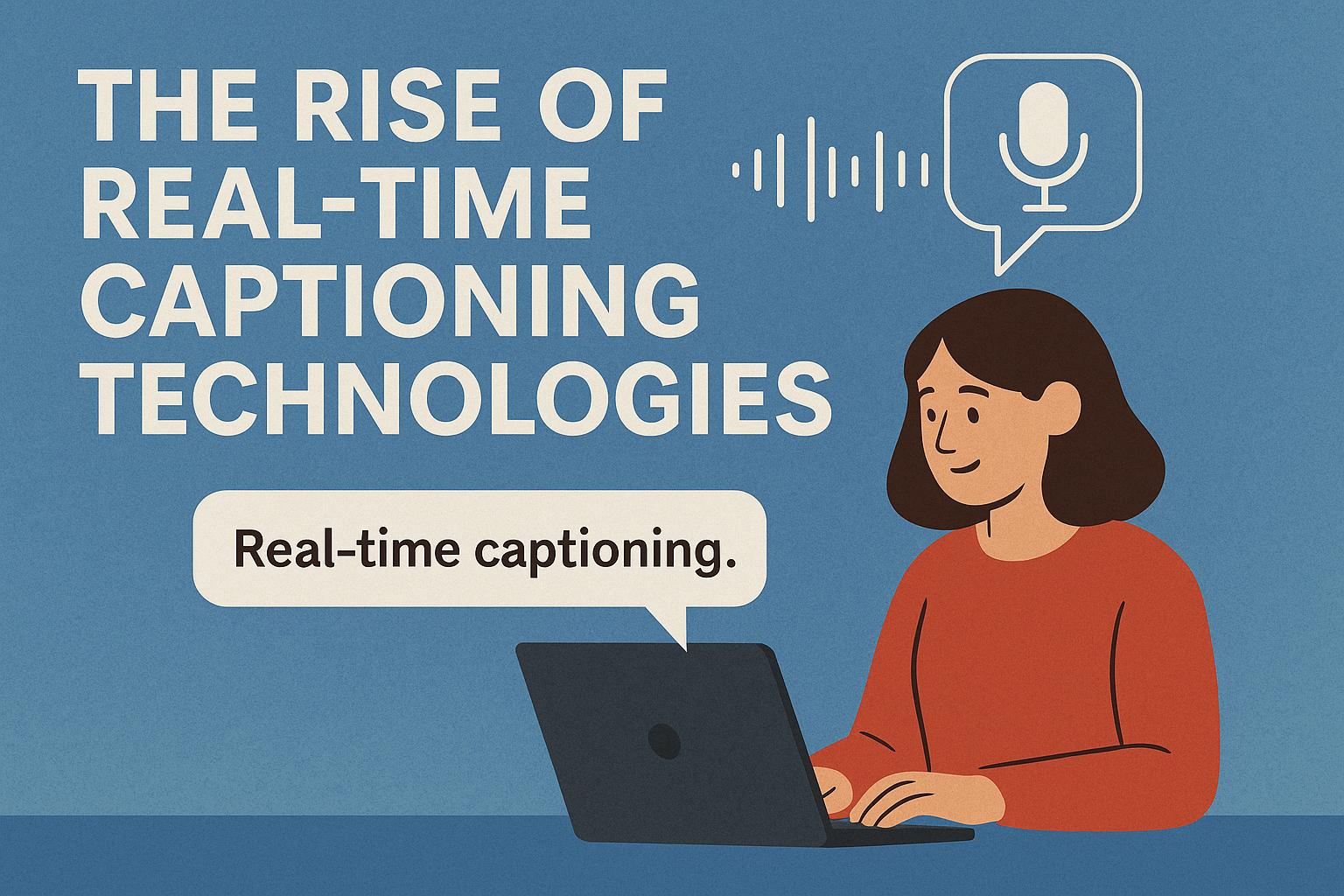The Evolution of Real-Time Captioning Technologies
In recent years, the field of real-time captioning has seen profound changes that have expanded its reach and functionality across various domains. These technologies, which were once limited and not very accessible, have now become vital tools that enhance both communication and inclusivity for diverse audiences.
Understanding Real-Time Captioning
Real-time captioning is a technology that converts spoken language into written text in near sync with the speech. This process is designed to produce captions almost instantaneously, with only a slight delay from the time the words are spoken. The primary function of this capability is to assist individuals with hearing impairments by providing them with an immediate textual representation of spoken content. However, the utility of real-time captioning extends beyond this primary function, playing a role in language translation and making content more accessible to the general public.
Technological Advancements Driving Growth
The rapid advancement in real-time captioning technologies can be attributed to the development of sophisticated algorithms and machine learning models. Technologies such as Artificial Intelligence (AI) and Natural Language Processing (NLP) have become key players in this evolution. These technologies contribute to understanding the context of spoken words, differentiating between multiple speakers, and capturing the subtle nuances inherent in natural speech. Leading companies in this sector are continually upgrading their systems, leveraging the power of cloud computing and data analytics to enhance both the speed and accuracy of captioning.
The ongoing improvements in AI and cloud-based computing solutions have made it possible to access vast amounts of data quickly and efficiently. This access enables the continuous training and refinement of algorithms that make real-time captioning possible. As a result, the systems become increasingly adept at understanding complex speech patterns and adapting to various linguistic challenges.
Applications Across Industries
The utility of real-time captioning technologies extends across multiple industries, each benefiting in unique ways:
Education: Educational institutions have embraced captioning technologies to support students with disabilities, especially those with hearing impairments. Additionally, these technologies aid non-native language speakers in overcoming language barriers, thereby enhancing their learning experience and improving educational outcomes.
Entertainment: The entertainment industry extensively uses real-time captioning for live broadcasts, including sports events and news programs. These captions improve accessibility for those who are deaf or hard of hearing, while also enhancing engagement for all viewers by providing a textual element that complements the visual and auditory components of live content.
Corporate Sector: In the corporate world, captioning technologies are pivotal during meetings, conferences, and all forms of collaborative endeavors. By ensuring that spoken content is immediately available in textual form, these technologies promote inclusivity and facilitate effective communication among team members who may have diverse linguistic or auditory needs.
Challenges and Future Directions
While there has been considerable progress in real-time captioning technologies, several challenges remain perennially present. These challenges include handling language diversity, deciphering various accents, and understanding technical jargon that may be specific to certain fields or industries. Moreover, privacy concerns arise when implementing these technologies in environments where sensitive information is shared. Developers aim to address these issues by refining AI models to be more inclusive of diverse linguistic features and by ensuring compliance with data protection regulations, such as those outlined in relevant privacy policies.
Looking to the future, the prospects for real-time captioning appear extremely promising. Emerging research is pushing the boundaries towards more interactive and user-friendly interfaces. A focus on personalization is also anticipated, with developments that allow captioning systems to learn user preferences and speech patterns. This adaptation will likely increase the technology’s appeal and effectiveness, making real-time captioning a more integral part of daily communication.
Conclusion
Real-time captioning technologies have fundamentally transformed the way we communicate, significantly promoting inclusivity and accessibility across different settings. As these technologies continue to evolve and mature, they will likely become more woven into the fabric of everyday life. Their integration promises to bolster communication, break down barriers, and ultimately support the creation of a more connected and inclusive global community. The continuous advancements in this field imply an ongoing commitment to fostering an environment where everyone, regardless of hearing ability or linguistic background, can participate seamlessly in communication. As we move forward, the synergy between technological innovation and user-centered design will play a crucial role in defining the landscape of real-time captioning and its applications.
